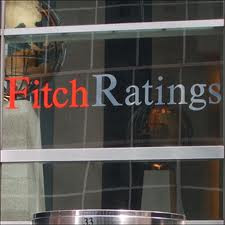After issuing co-branding interest on credit cards for many retailers (supermarkets, car, tour operators, telecom ...). The increase in sales, the new potential of loyalty or the innovative images of the brand are often cited as advantages of the device. However, this new model card is it so attractive it is understood, particularly for carriers that have already greatly expanded an offer for "credit card"?
The provision of means of payment through non-bank is not new. Credit cards say "private", which bear the logo and colors of the sign that the commercial offer, are already widespread (one person in four has at least one store card in Europe). These allow the wearer to pay for purchases in stores of the brand or brands in a community of partners (equipped with specific payment terminals capable of reading the map). End of period, the balance of expenditure is deducted from the customer's bank account specified in the subscription card.
For the wearer, the main advantage of these cards is access to credit facilities in the form of consumer credit. For the merchant, this device allows to increase sales through financing provided to customers. That is why they are often offered free of charge and available direct in store.
These systems of credit cards are designed and managed by the players specialized in consumer credit. Largely in competition in this market segment, they offer innovative and customized services to retailers. Thus, these payment methods usually offer several additional features:
* Choose from several formulas settlement at the time of checkout: cash payment, use of the reserve revolving unique to the card, credit depreciable independent promotional rates (especially during Christmas or birthday of the brand ...)
* Advantages of a traditional loyalty card: accumulation of points, good management and specific reductions, access to targeted campaigns (type balances private ...)
* Insurance and other additional services
In addition, this system is transparent to the user, since these cards are promoted and distributed by the sign at the point of sale.
The provision of means of payment through non-bank is not new. Credit cards say "private", which bear the logo and colors of the sign that the commercial offer, are already widespread (one person in four has at least one store card in Europe). These allow the wearer to pay for purchases in stores of the brand or brands in a community of partners (equipped with specific payment terminals capable of reading the map). End of period, the balance of expenditure is deducted from the customer's bank account specified in the subscription card.
For the wearer, the main advantage of these cards is access to credit facilities in the form of consumer credit. For the merchant, this device allows to increase sales through financing provided to customers. That is why they are often offered free of charge and available direct in store.
These systems of credit cards are designed and managed by the players specialized in consumer credit. Largely in competition in this market segment, they offer innovative and customized services to retailers. Thus, these payment methods usually offer several additional features:
* Choose from several formulas settlement at the time of checkout: cash payment, use of the reserve revolving unique to the card, credit depreciable independent promotional rates (especially during Christmas or birthday of the brand ...)
* Advantages of a traditional loyalty card: accumulation of points, good management and specific reductions, access to targeted campaigns (type balances private ...)
* Insurance and other additional services
In addition, this system is transparent to the user, since these cards are promoted and distributed by the sign at the point of sale.





























